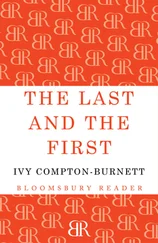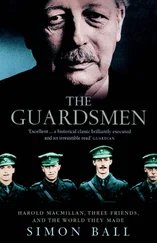The Checking Department was one of three central offices at Lyons supervised in those pre-war days by a young manager called John Simmons. Yet as Simmons surveyed the roomful of clerks and their clacking machines, all he saw was a waste of human intelligence. Punching a Burroughs calculator could be worse drudgery even than unskilled factory work for the girls who made up most of the workforce. At least on an assembly line, he mused, you could chat to the next worker or let your mind wander while you carried out a repetitive task. Mechanised clerical work demanded total attention, but granted no intellectual satisfaction in return. Simmons began to dream of the day when ‘machines would be invented which would be capable of doing all this work automatically’. Such machines would free managers such as himself from marshalling their armies of clerks, and allow them ‘to examine the figures, to digest them, and to learn from them what they had to tell us of better ways to conduct the company’s business’.
Within little more than a decade he had made that dream a reality by persuading the board of Lyons that their company must become the first in the world to build its own electronic, digital computer. This was not, as computer historian Martin Campbell-Kelly has written, merely ‘the whim of a highly-placed executive’. While occasionally unrealistic, perhaps even grandiose in his conceptions, Simmons was not a man subject to ill-considered whims. From his perspective, building a computer was not only logical and rational but essential to the good of Lyons and the efficiency of British business. Moreover, his idealism was not out of place in the Lyons corporate culture. Far from being surprising that the seed of business computing should take root and grow in Lyons before any other company in the world, in almost every respect it provided ideal conditions.
To anyone who has lived in Britain for more than thirty years the name of Lyons is instantly recognisable. The fame of J. Lyons & Co. rested principally on its chain of high street cafés known as the Lyons teashops. Before the outbreak of the Second World War there were more than two hundred and fifty of them throughout the country, with the densest concentration in London. Oxford Street alone had six, while the closely packed streets of the City of London, the financial heart of the capital, revealed another teashop at almost every turning. They spread through the suburbs from Camberwell to Wembley; from Plymouth to Newcastle, provincial cities each had their own.
At its peak the Lyons empire also included grander restaurants and hotels in London and other big cities, including the legendary Lyons Corner Houses and the Trocadero; a food manufacturing and distribution business that not only supplied the teashops and restaurants but also delivered Red and Green Label Tea, Kup Kakes and Lyons Maid ice cream to grocers’ shops the length and breadth of the country; and a catering service for large-scale events including Masonic dinners, Buckingham Palace garden parties, the Chelsea Flower Show and the Wimbledon tennis championships.
How did a firm founded on gratifying English tastes for tea and bland, comforting food become a high-tech pioneer? Behind the Lyons shopfronts with their pyramids of iced fancies lay a manufacturing and distribution empire launched with immense commercial vitality. The Lyons of the early twentieth century was a young, progressive company, eager to adopt new methods in both manufacturing and management. The company was founded just as a wave of social and technological change was beginning to transform the world of business; for the first fify years of its existence, Lyons was riding the crest of that wave.
J. Lyons & Co. had its origins in a family tobacco business established in London by Samuel Gluckstein, whose father Lehmann Meyer Gluckstein had brought him and his seven siblings from their native Prussia to settle in London in 1841. Jewish immigration to Britain from continental Europe in the mid-nineteenth century stemmed from the discriminatory practices of a number of trade and craft guilds, which effectively excluded Jewish citizens from many profitable areas of work. German and Dutch Jews settled predominantly in the narrow, crowded streets of Spitalfields in East London, and it was here that Samuel Gluckstein first lodged with his aunt Julia Joseph. Samuel and his younger brother Henry started a small tobacco business in Leman Street, Whitechapel, in 1864 with their cousin Lawrence Abrahams, employing skilled local people to make cigars and cigarettes by hand. But the partners fell out among themselves and the company had to be dissolved in 1870.
A few years after arriving in London Samuel married his cousin Hannah Joseph, and by the 1870s they had ten surviving children. In 1872 Samuel started a new, small-scale cigar-making business in Whitechapel Road, in partnership with his sons Isidore and Montague and another tobacco trader, Barnett Salmon, who had married Samuel’s daughter Helena. Almost immediately their fifty-four-year-old father’s unexpected death from diabetes left the young men with responsibility for the welfare of a large extended family.
Still shocked at their bereavement, the three remaining directors met to decide how to proceed. Mindful of the feud that had destroyed Samuel’s first company, they shook hands on an extraordinary agreement. Adopting the motto L’union fait la force (strength in union), they placed the assets of the new company, Salmon & Gluckstein, in a family fund in which each of the sons and sons-in-law of Samuel Gluckstein had an equal share. While individual family members undoubtedly had greater or lesser influence in the years to come, the philosophy of collective family ownership and collective family decision-making proved extraordinarily durable. The family continued to hold its property in common until the early 1990s, sharing all the proceeds of the business equally and owning houses and even cars communally rather than individually. Pushed to think of an exception, a surviving family member says that he supposes he might have been allowed to keep his winnings if he had a lucky bet on the horses.
From small beginnings the company grew rapidly. To increase its profitability in the highly competitive cigar-making market, the directors opened a retail tobacconist’s shop in Edgware Road shortly after the company’s foundation. By 1894 there were thirty Salmon & Gluckstein shops throughout London. Three years later there were double this number, and by the end of the century it was the world’s largest chain of tobacconists with 140 shops.
The shops sold Salmon & Gluckstein’s own products – such as ‘Raspberry Buds’ and ‘Snake Charmer’ cigarettes – as well as cigars and cigarettes from other manufacturers. With Boots the Chemists, the stationers W. H. Smith and Barratt’s Shoes, the company was among the first in Britain to recognise that selling through multiple outlets gave it the bargaining power to drive down wholesale prices, and hence to inspire consumer loyalty by passing on savings to enthusiastic customers. It sold its products at aggressively competitive prices, leading to frequent protests from small, independent tobacconists who could not command such large discounts from suppliers. Salmon & Gluckstein also made extensive use of advertising (‘The more you smoke, the more you save!’) and of gimmicks such as cigarette cards, now collectors’ items, that could be saved up and exchanged for gifts. Their business methods occasionally verged on the unscrupulous: on one occasion they were successfully sued for continuing to label their cigarettes ‘handmade’ after they had introduced automatic cigarette-rolling machines. But while their competitiveness provoked indignation among their rivals, their success could only earn grudging admiration.
Читать дальше












